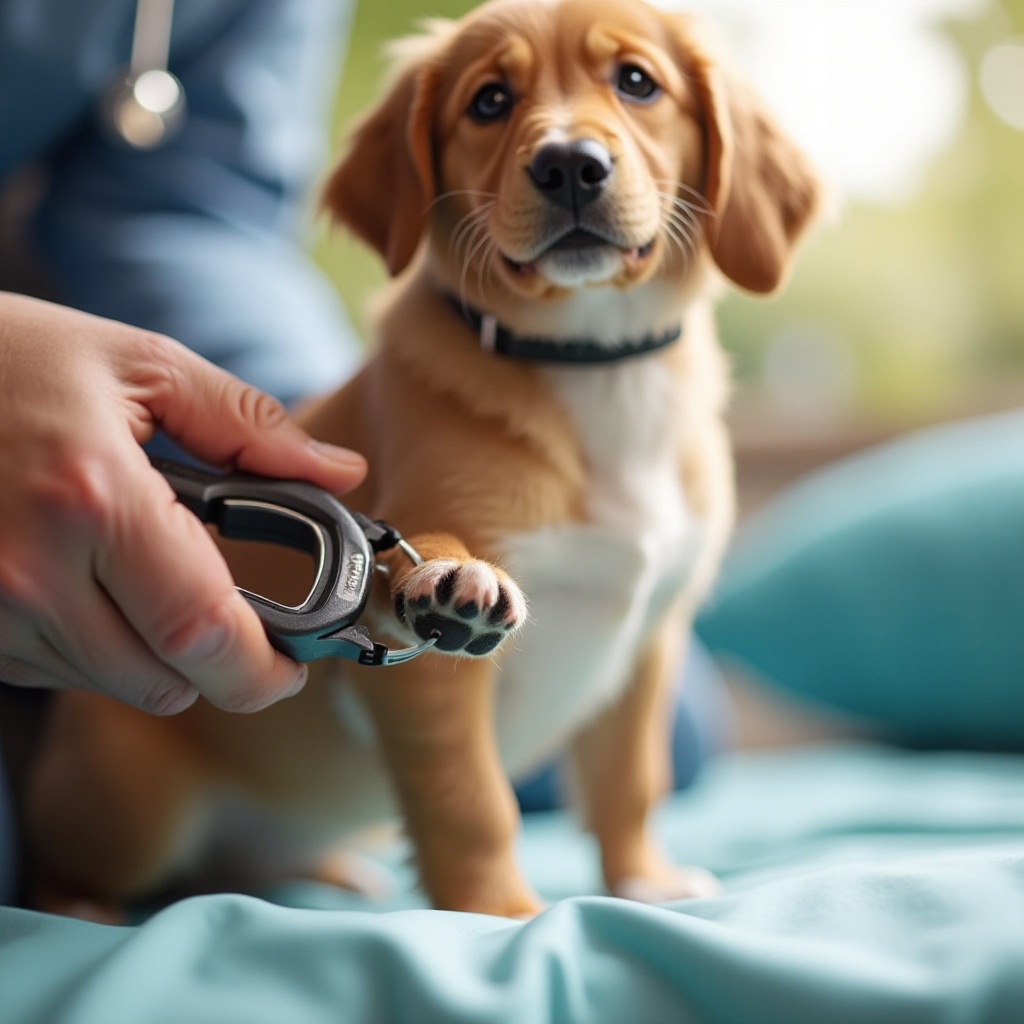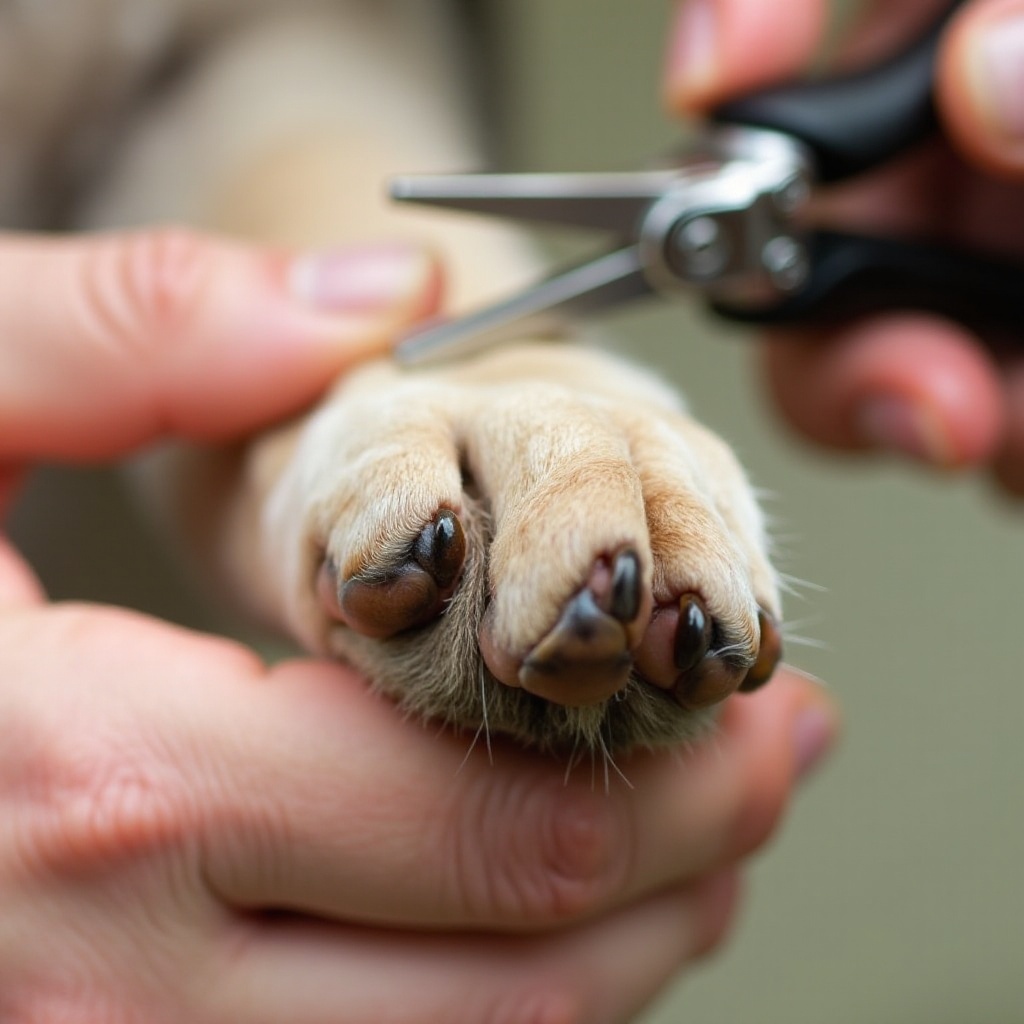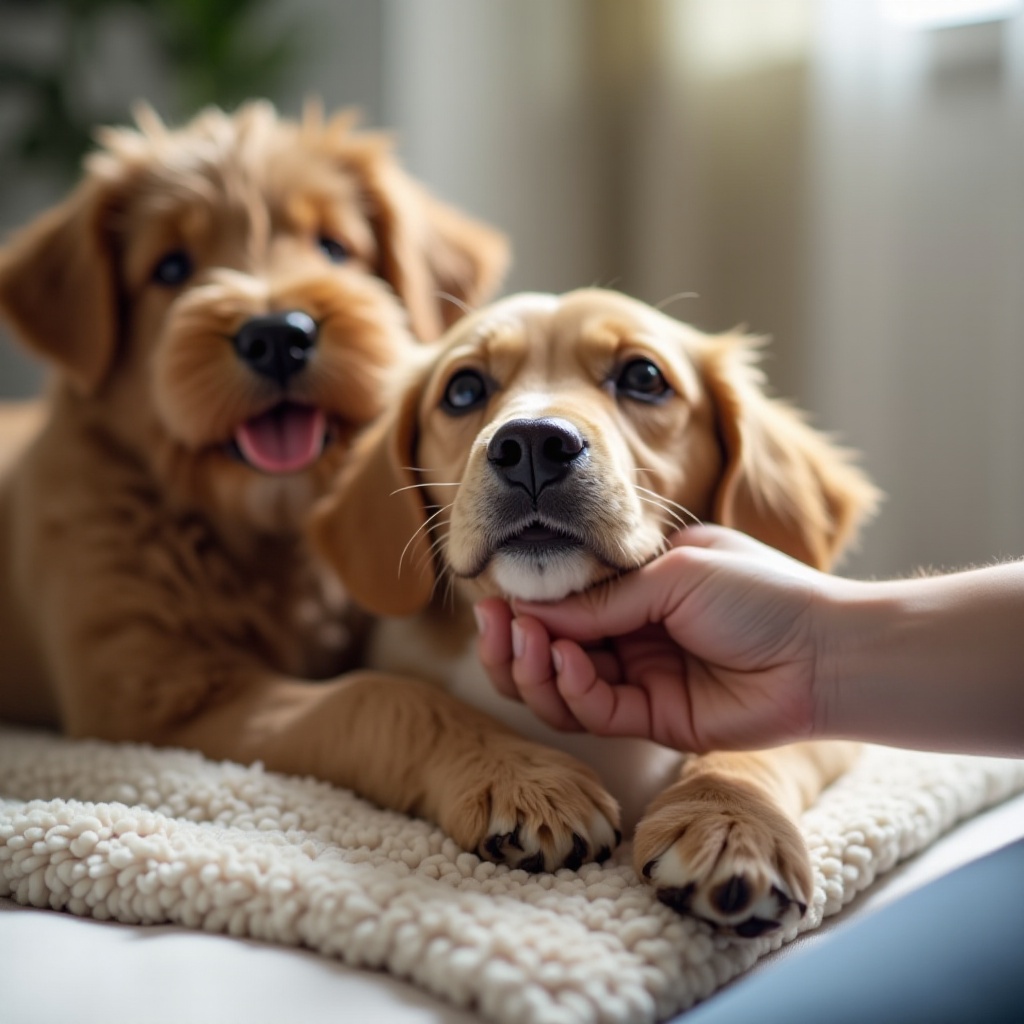Introduction
Cutting your dog’s nails can seem like a daunting task, but it’s an essential part of pet care. Properly trimmed nails ensure your furry friend’s comfort and health, and knowing the right techniques can make the process easier for both of you. This guide covers everything from the importance of nail trimming, tools you’ll need, and understanding nail anatomy to finding the perfect cutting angle, step-by-step instructions, common mistakes, and keeping your dog calm during the process.

Why Cutting Dog Nails is Important
Regular nail trimming is crucial for your dog’s well-being. Overgrown nails can lead to discomfort and various health issues. When a dog’s nails become too long, they may experience difficulty walking, which can lead to joint pain and other mobility issues. Additionally, long nails are prone to breaking and splitting, which can be painful and may cause infections. Proper nail trimming helps in maintaining your dog’s overall posture and movement, preventing these problems before they start.
Moreover, long nails can get snagged in carpets or other materials, causing injury. Dogs with overgrown nails can also accidentally scratch their owners or themselves. Keeping the nails at an appropriate length ensures both your dog’s safety and the safety of those around them.

Tools You’ll Need for Nail Trimming
Before you start trimming your dog’s nails, gather the necessary tools to make the process as smooth as possible. Key items include:
- Dog Nail Clippers: There are various types, such as guillotine-style, scissor-style, and plier-style. Choose one that you find comfortable to use.
- Styptic Powder: This is essential for stopping bleeding in case you accidentally cut the quick.
- Nail File or Grinder: Useful for smoothing out rough edges after trimming.
- Treats: To reward your dog and make the experience positive.
- Towel or Blanket: To provide comfort and support for your dog during the process.
Having these tools at your disposal can make the nail trimming task less stressful and more effective.
Understanding Dog Nail Anatomy
To trim your dog’s nails correctly, it’s crucial to understand their anatomy. Dog nails consist of several parts:
- The Keratin Shell: The hard, outer portion of the nail.
- The Quick: The inner, sensitive part containing blood vessels and nerves.
The quick is highly sensitive and can cause bleeding and discomfort if cut. In dogs with light-colored nails, the quick is usually visible as a pinkish area within the nail. However, in dogs with dark-colored nails, identifying the quick can be more challenging.
Understanding where the quick is located will help you avoid cutting into it, making the process painless for your dog. If the nails are overly long, the quick may extend further down, making it necessary to trim small amounts frequently to encourage the quick to recede.
The Perfect Angle for Cutting Dog Nails
One of the most crucial aspects of nail trimming is cutting at the correct angle. The ideal angle is a 45-degree cut. This angle prevents splitting and ensures a smoother trim.
Begin by holding the paw firmly but gently. Position the clipper at a slight angle and make the cut. Always cut gradually and never make large cuts, especially if the quick is hard to see. On dark nails, it’s better to take numerous small trims, checking the cut surface frequently. Look for a chalky white ring, which indicates you’re nearing the quick.
By following this guidance, you can ensure a successful nail trimming session each time.
Step-by-Step Guide to Trimming Your Dog’s Nails
Trimming your dog’s nails can be intimidating, but by following these steps, you can ensure a safe and stress-free experience:
- Prepare the Area: Select a quiet and comfortable place for nail trimming. Lay down a towel or blanket.
- Gather Your Tools: Have your clippers, styptic powder, treats, and a file or grinder within reach.
- Calm Your Dog: Use a soothing voice and gentle petting to keep your dog relaxed.
- Inspect the Nails: Identify the quick in each nail. Remember, light nails make this easier, while dark nails require you to take more caution.
- Position the Clipper: Hold your dog’s paw firmly but not too tight. Position the clipper at a 45-degree angle to the nail.
- Make the Cut: Trim a small part of the nail. If your dog remains calm, you can proceed by making additional small cuts.
- Smooth the Edges: Use a nail file or grinder to smooth out any rough edges and prevent splitting.
- Reward Your Dog: Give your dog treats and praise to reinforce positive behavior.
By following these detailed steps, you can build confidence and skill in trimming your dog’s nails.
Common Mistakes to Avoid
Even experienced pet owners can make mistakes while trimming dog nails. Here are some common pitfalls to avoid:
- Cutting Too Much at Once: This increases the risk of cutting the quick. Always opt for smaller trims.
- Ignoring the Quick: Failing to account for the quick can cause pain and bleeding. Always be cautious, especially with dark nails.
- Not Using Styptic Powder: If you accidentally cut the quick, having styptic powder on hand is essential for stopping the bleed.
Avoiding these mistakes can make nail trimming a more pleasant experience for you and your dog.
How to Keep Your Dog Calm During Nail Trimming
Maintaining your dog’s calm is vital during nail trimming. Here are some tips to help:
- Start Early: Introduce nail trimming when your dog is still a puppy to help them get accustomed to the process.
- Regularly Handle Paws: Frequently touch and handle your dog’s paws to keep them comfortable with the sensation.
- Use Treats: Rewarding your dog with treats makes the experience positive.
- Take Breaks: If your dog becomes agitated, take a break to avoid creating a negative association with nail trimming.
- Stay Calm: Your dog can pick up on your emotions. Stay relaxed and speak soothingly.
Implementing these strategies helps create a calm, positive experience for your dog.

Conclusion
Trimming your dog’s nails doesn’t have to be stressful. With the right tools, understanding nail anatomy, and following the correct techniques, you can ensure a pain-free and positive experience for your furry friend. Remember to be patient, calm, and rewarding. Your dog’s health and comfort are well worth the effort.
Frequently Asked Questions
What should I do if I accidentally cut the quick?
If you cut into the quick, stay calm. Apply styptic powder to the bleeding nail, pressing gently to stop the bleed. Comfort your dog and offer a treat to soothe them.
How often should I trim my dog’s nails?
The frequency of trimming depends on the dog’s activity level and nail growth rate. Generally, every 3-4 weeks is ideal. Dogs that walk on hard surfaces may naturally wear down their nails more.
Are there alternatives to clipping my dog’s nails?
Yes, alternatives include nail grinding and using nail files. Additionally, regular walks on hard surfaces like concrete can help keep your dog’s nails trimmed naturally.
